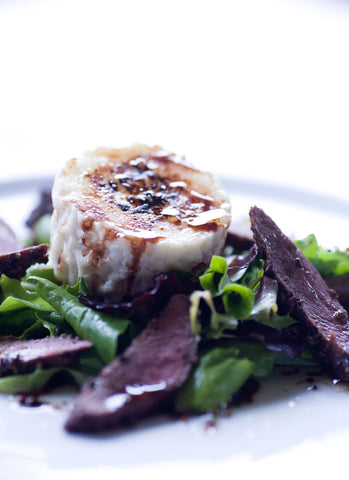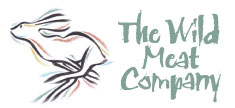Sharing the Suffolk hare
by Robert Gooch September 15 2017
In coastal Suffolk, where the Wild Meat Company is based, the brown hare is thriving. So wherever you live in the UK, you can enjoy the fresh gamey flavour of hare with our overnight delivery service.
 For game lovers, the unique rich taste of hare is a delicacy. Fortunately for us in Suffolk, hare is abundant despite concerns about populations in the South-West and elsewhere in the UK. It’s a regular feature on our menus, thanks to our continuous supply – and we’d like to ensure it remains a taste everyone in the country can savour.
For game lovers, the unique rich taste of hare is a delicacy. Fortunately for us in Suffolk, hare is abundant despite concerns about populations in the South-West and elsewhere in the UK. It’s a regular feature on our menus, thanks to our continuous supply – and we’d like to ensure it remains a taste everyone in the country can savour.
Why are there so many hares in Suffolk?
The decline in hare numbers in western areas is thought to be the result of modern farming practices. In the West, where dairy farming dominates, single-species grasslands cultivated for livestock grazing and sileage lack the biodiversity and cover hares need to flourish. Here in coastal Suffolk, on the other hand, our lowland arable farms, forests and marshlands provide hares with the habitat and varied diet they need to thrive. Our mix of spring-sown vegetable crops and autumn-sown cereal crops, together with hay crops and wildlife and game strips, have made Suffolk a stronghold for the hare.
Buying hare
To protect hares during the breeding season, British hare cannot be sold (or put on a menu) between 1 March and 31 July.
From August until February, however, fresh locally-shot hare is readily available. Choose from small hares (leverets) or larger ones – skinned and whole, jointed or still in fur. You can also opt for just the haunches, where most of the meat is, or treat yourself to a tender and delicate saddle.
Cooking and eating hare
Hare is richer, darker and stronger in flavour than its nearest cousin, rabbit (which, like goats and sheep, come from the same family but are entirely different species).
Leverets (a hare under one year old) can be roasted but many people prefer slow-cooking to tenderise the back legs – and older hares should always be slow-cooked. As the UK’s fastest land mammal, able to reach speeds of up to 35 mph, it’s no surprise that brown hares have a muscly pair of back legs that benefit from long cooking at low temperatures.
Jugged hare
Jugged hare is a traditional dish in which a jointed hare is cooked in a tall jug or sealed pot and placed in a simmering pan of water for gentle slow cooking. The origins of the dish can be traced back to the famous 18th-century cookbook, The Art of Cookery by Hannah Glasse. Many recipes for jugged hare include reserved hare blood but as our fresh whole hares still have blood in the joints, we find that additional blood is no longer a necessity. There is sufficient in the joints to add the silky richness to the sauce for which jugged hare is renowned.
Many chefs recommend marinating your hare in red wine, stock and herbs for up to 36 hours prior to cooking. Remove the hare to brown it in butter or fat before adding it to a casserole pot with softened onions and vegetables. You can then add your retained marinade to your pot or reduce it first for a thicker sauce.
With a lid tightly on, your casserole will be sumptuous and tender in around 3 ½ hours in an oven set to 140°C/gas mark 1.
The delicate loin fillets from the saddle, however, need no such long cooking: they are delicious flash fried and eaten rare. To remove the loins from the backbone, simply run a knife along each side.
Ideal flavours for hare
Herbs: rosemary, bay, thyme, parsley
Spices: nutmeg, ginger, pepper, cayenne
Alcohol: red wine, white wine, dry cider
Our favourite hare recipes
- Valentine Warner's good hare recipe
- Rachel Walker’s jugged hare
- Mrs Beeton’s jugged hare (cooked by Xanthe Clay)
- Rose Prince’s braised hare with red wine and rosemary
- Taste of Game’s peppered hare loin with goat’s cheese
- Game-to-Eat’s hare pie
- Jamie Oliver’s game ragu with pappardelle

